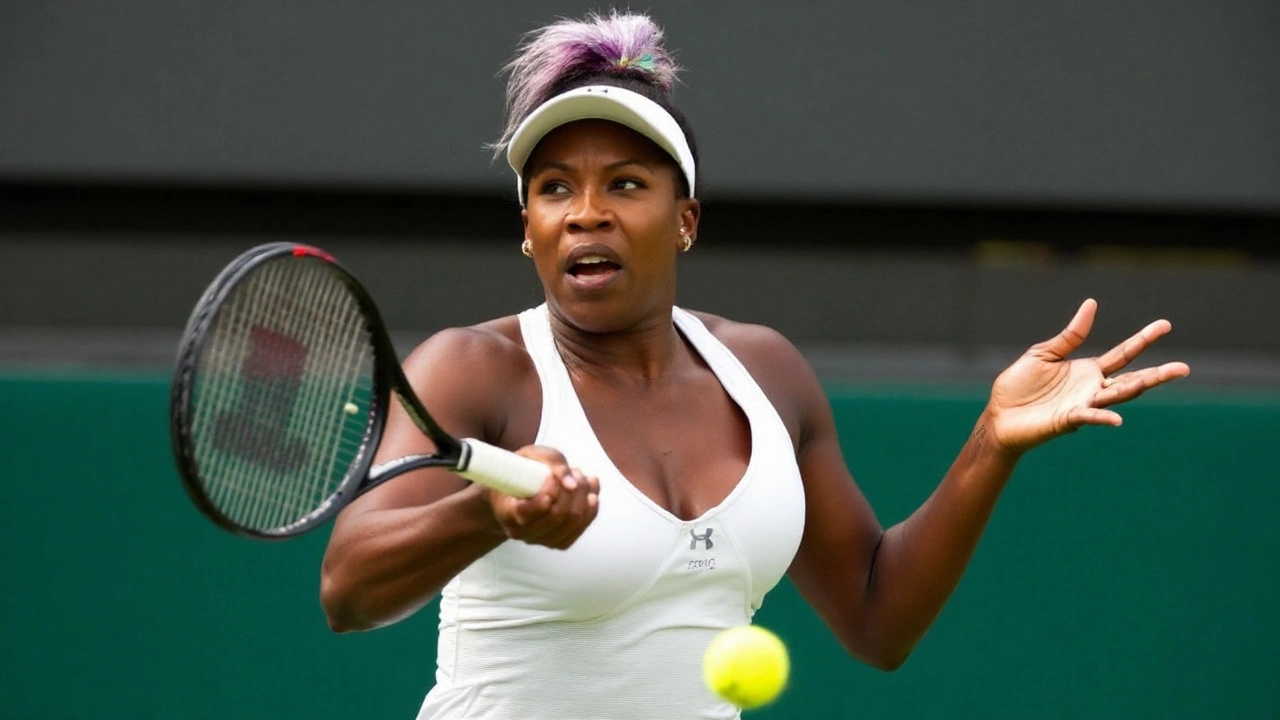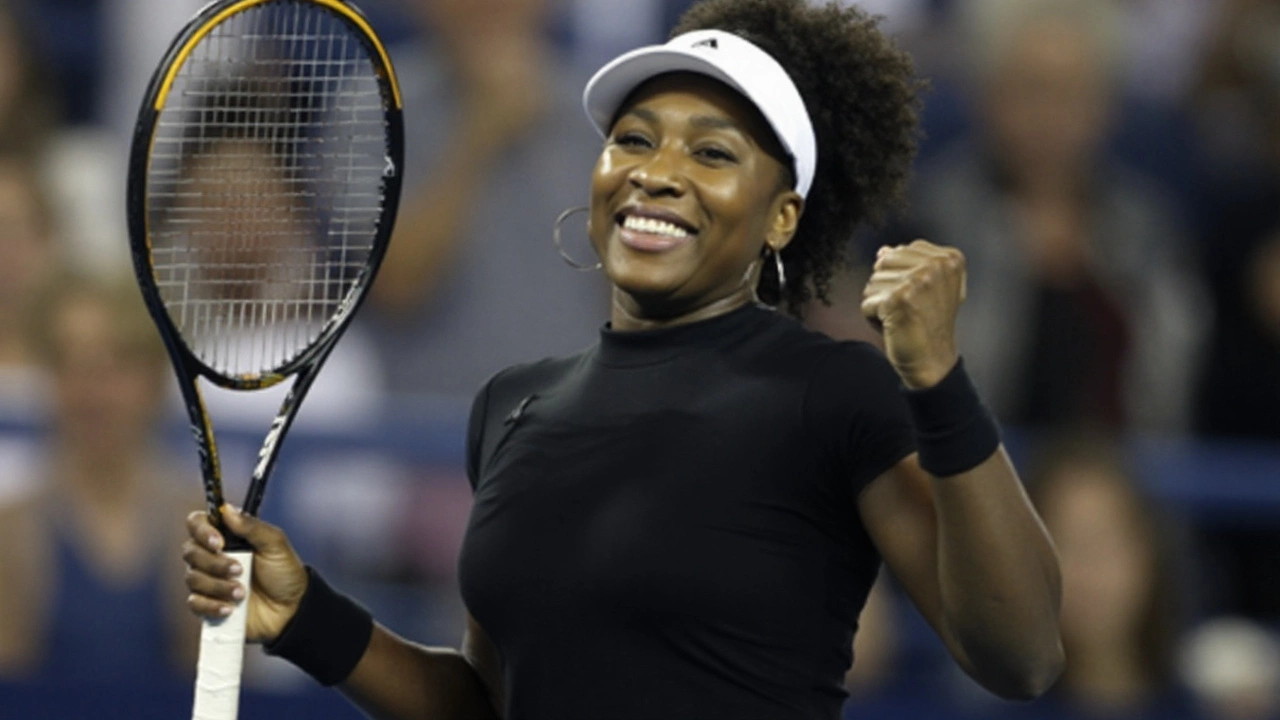Richest Female Tennis Players 2025: How Serena, Pegula, Gauff, Swiatek, and Osaka Turned Wins into Empires
 Aug, 26 2025
Aug, 26 2025
Tennis’s New Power Play: Wins, Equity, and A-List Brands
Prize money tells only half the story now. The women at the top of tennis are earning more off the court than on it—and they’re doing it by acting like CEOs as much as champions. The richest female tennis players heading into 2025 aren’t just collecting trophies. They’re building venture portfolios, launching brands, and taking ownership stakes in teams and startups.
At the center of this shift are five players who have set the financial pace for the sport. Serena Williams remains the benchmark for athlete-entrepreneurs. Jessica Pegula brings a different kind of leverage: family-backed capital and access. Coco Gauff is the new face of the tour and a sponsor favorite before turning 22. Iga Swiatek’s 2025 run has been a money-maker on court and a magnet for premium partners. And Naomi Osaka—still a global icon—has turned selective scheduling into a savvy business strategy.
What’s changed? Endorsements are now structured around equity, content, and long-term brand building. Contracts reward authenticity and influence, not just rankings. And the market has grown up: women’s sports are drawing record audiences and attracting investment from blue-chip companies that used to sit on the sidelines. The result is a very modern kind of tennis fortune.

The Five at the Top—and How They Got There
Serena Williams—From Center Court to the Boardroom
Call Serena the template. With an estimated net worth in the $300–350 million range, she’s still the sport’s financial north star. On-court, she banked close to $95 million in career prize money—more than any woman in WTA history. Off-court, she scaled up. Multi-year deals with Nike, Gatorade, Gucci, and other household names formed the base. Then she moved into ownership and venture capital.
Serena Ventures has backed dozens of startups across tech, commerce, and health, with a clear focus on founders traditionally overlooked by Silicon Valley. She launched Wyn Beauty to tap the booming cosmetics market and turned her platform into an engine for deal flow. More recently, she widened her sports footprint with an ownership stake in the WNBA’s Toronto Tempo, a sign of where athlete influence is going next: into the governance of leagues and teams. Even in semi-retirement, the Serena economy keeps compounding because it’s built on equity, not just appearance fees.
Jessica Pegula—Talent Meets Family Capital
Pegula’s path is unusual for a top-10 player. Reports often peg her net worth around $350 million, a figure more connected to her parents’ multibillion-dollar fortune than prize money alone. Terry and Kim Pegula built their wealth in petroleum and natural gas and own the NFL’s Buffalo Bills and the NHL’s Buffalo Sabres. That backdrop sets Pegula apart. She doesn’t play under financial pressure—and that freedom has helped her climb to a career-high world No. 3.
On the business side, her edge is access. She moves in a world where sports franchises, media rights, and infrastructure projects are dinner-table topics. That exposure shapes her career choices and opens doors most players never see. It doesn’t diminish her on-court work—if anything, it spotlights it. Pegula is proof that in tennis’s new economy, success comes in different packages: you can be both a grinder on tour and a power player by association.
Coco Gauff—The Teen Star Who Turned Momentum into Markets
Gauff is the breakout business case of her generation. After her US Open title and a sustained top-5 presence, she vaulted into the front row of global marketing. She’s 21 and already a trusted face for New Balance, Head, and Barilla. She’s done more than stack logos, though. Her foundation work aims to widen access to tennis for underprivileged kids—an authentic story that brands actually look for. This year she added a landmark sportswear deal that underscores a larger reality: she moves consumer culture far beyond the tennis diehards.
The reason sponsors go big on Gauff is simple: reach and relevance. She connects across age groups, and she’s comfortable on social, on camera, and in corporate settings. That versatility translates into long-term partnerships with performance bonuses and product collaborations. If her results keep tracking up, her endorsement ladder will go with them. The upside is massive because the markets she plays in—fashion, fitness, food—are global and endlessly repeatable.
Iga Swiatek—Dominance, Consistency, and a 2025 Payday
Swiatek’s run since 2020 has been relentless, and 2025 raised it a notch. She captured Wimbledon and the Cincinnati Masters this season, pushing her year’s take to roughly $12.66 million—tops among women in 2025—and moving her career prize money to $41,349,048, third all-time per WTA figures. She’s built a reputation for preparation and control. With that comes sponsor trust.
Swiatek’s commercial mix reflects a top-tier profile: premium apparel and performance partners alongside luxury and timepiece deals. The portfolio includes Adidas, Porsche, and Hublot, and her team has added a forward-leaning layer with investments in sustainable fashion and Polish startups. She’s turning her marketability at home into a regional business strategy, then exporting it globally as her trophy count climbs. Her message is consistent: disciplined, modern, and values-driven. That’s catnip for multinationals.
Naomi Osaka—Selective Schedule, Maxed-Out Brand
Osaka is the clearest example of how to monetize attention without playing 25 events a year. With four Slams and a net worth around $45 million, she commands one of the strongest endorsement rosters in the sport, including Nike, Louis Vuitton, and Citizen. Her influence runs beyond sponsorships. She co-founded Hana Kuma, a production company, and launched Kinlò, a skincare line tailored for melanated skin. She’s also put money into women’s sports and wellness ventures where her voice carries weight.
Osaka has been open about mental health and motherhood, and brands have stuck with her through breaks in competition because her cultural footprint never faded. She’s a reminder that the modern athlete economy rewards clarity of purpose as much as match wins. When she plays, ratings pop. When she doesn’t, her projects keep the needle moving.
What Separates These Five
Beyond famous names, they share the same financial playbook. They’re not just endorsers; they’re partners, founders, and investors. The money is structured to outlast their primes.
- Equity over one-off fees: Deals now include stock, revenue share, and board-level influence.
- Founder energy: Beauty, wellness, and consumer tech are the go-to categories for athlete-led brands.
- Ownership stakes: From WNBA teams to venture funds, athletes are buying into the sports-business stack.
- Smart scheduling: Peak performance plus targeted media windows deliver more value than nonstop travel.
- Global-first branding: Partnerships cross continents and categories, not just the tour’s calendar.
Prize Money vs. Everything Else
Equal pay at the Slams matters, but endorsement math dwarfs even the biggest checks. Titles unlock top-tier bonuses and help with global distribution, yet the richest deals now hinge on a player’s story and staying power. That’s why Serena’s venture returns, Osaka’s content business, and Gauff’s youth-fueled partnerships hold so much sway. Pegula’s platform shows how family capital can accelerate access. Swiatek’s 2025 haul shows that dominance still moves markets—especially when it comes with measurable consistency.
Brands have also gotten savvier about contract language. Maternity protection, mental-health optics, and community impact are now part of the negotiation. Players who can align product, purpose, and performance end up with the kind of multi-year agreements that keep paying long after a ranking dips.
Serena’s Long Tail
Williams’s career is the case study future athletes will read. She spent years turning visibility into assets: early checks from blue-chip sponsors, then equity positions, then founder status. The through line is control. Wyn Beauty sits in a category she knows inside out—performance meets style. Serena Ventures writes checks into founders and sectors that connect to her audience. And her WNBA ownership move widens the moat: distribution, real estate, and league politics become part of the value she helps create. It is a compounding machine.
Pegula’s Platform
Pegula’s business power is less about personal product lines and more about strategic positioning. She sits at the intersection of pro sports operations, media rights, and live-event economics—because that’s her family’s day job. That vantage point is rare in tennis, where most players grow up in private academies far from front-office conversations. Pegula’s career reminds us that wealth in sports can be hereditary, earned, or both—and that the respect of the locker room still depends on results.
Gauff’s Ceiling
Gauff is entering the phase where she can shape markets, not just ride them. The foundation work builds durability with sponsors. The on-court results build leverage for equity terms and signature collections. She’s young enough to partner with brands for a decade and still be in her prime. If she adds more Slams, she’ll convert that momentum into category expansion—think performance wear collaborations, connected fitness, and consumer tech aimed at Gen Z and Gen Alpha.
Swiatek’s Engine
For Swiatek, consistency is currency. The 2025 Wimbledon title changed her narrative from clay specialist to all-surface threat, and the Cincinnati win underscored it. That makes planning easier for sponsors and investors. The endorsements—Adidas, Porsche, Hublot—signal a premium lane. The investments in sustainable fashion and Polish startups add a “builder” identity to her resume. She’s staking a claim in Europe’s growth markets while staying global on court.
Osaka’s Flywheel
Osaka’s brand doesn’t need a weekly trophy to function. It needs cultural relevance—which she delivers in media, fashion, and social impact. That strategy lets her manage workload while keeping value high. The result: more control over her schedule and her story, with room to make bets on businesses that fit her audience.
Why This Moment Is Different for Women’s Tennis
Three forces are converging. First, the audience is bigger and younger, thanks to streaming and social. Second, the sponsor class has changed: luxury, tech, and wellness brands see women’s sports as growth markets, not charity. Third, athletes have more tools. They can raise, build, and market without asking permission.
That’s why we’re seeing more athlete-led funds, more co-created product lines, and more ownership stakes. It’s also why contracts look different. They include creator budgets, content windows, and data-sharing clauses. The old model paid for presence. The new model pays for influence—and in many cases gives the athlete a piece of the upside.
The Ripple Effect on the Tour
As these five push earnings higher, the floor rises for everyone else. Younger players copy the blueprint: hire commercial strategists early, align with a few long-term partners, seek equity, and avoid over-scheduling. Tournament organizers adjust too, selling bigger sponsorship packages around a smaller pool of headliners. When Swiatek or Gauff commits, sales teams script campaigns around them. When Osaka plays, broadcasters retool their weekend plans.
What to Watch Next
Three storylines worth tracking as 2025 rolls on:
- Equity-heavy deals go mainstream: Expect more contracts that swap cash for cap tables, especially in wellness, consumer tech, and fashion.
- Team ownership becomes a trend: Serena’s move with Toronto Tempo won’t be the last. Tennis money will look for stable, cash-flowing assets.
- Content arms race: Player-led studios and docu-series will battle for attention around Slams and Masters events. Athletes who own their footage will own more of the upside.
The Bottom Line
Serena Williams still sets the standard with a $300–350 million fortune built on performance and ownership. Jessica Pegula’s path shows how heritage capital and elite results can coexist. Coco Gauff is scaling on schedule, with the market ready to go bigger. Iga Swiatek turned 2025 dominance into the year’s top earnings and a more premium brand lane. Naomi Osaka continues to prove that a modern athlete can play less and earn more if the brand machine is built right. Five players, one message: this era belongs to athletes who think like builders.